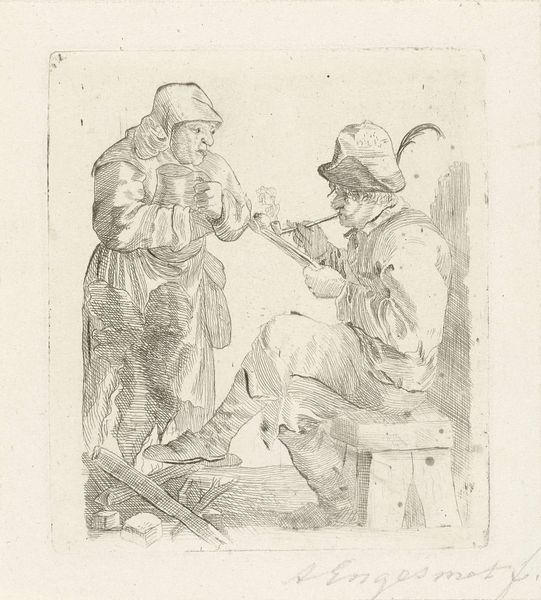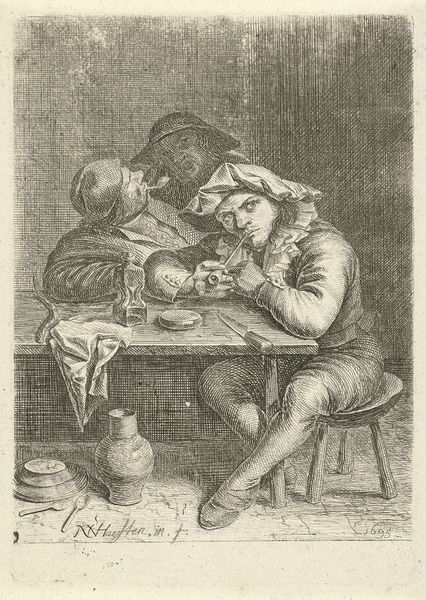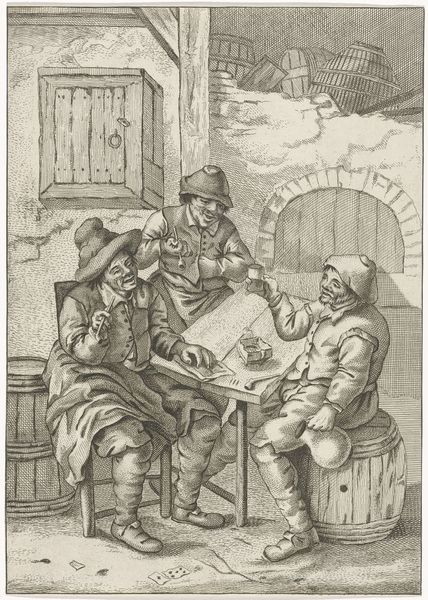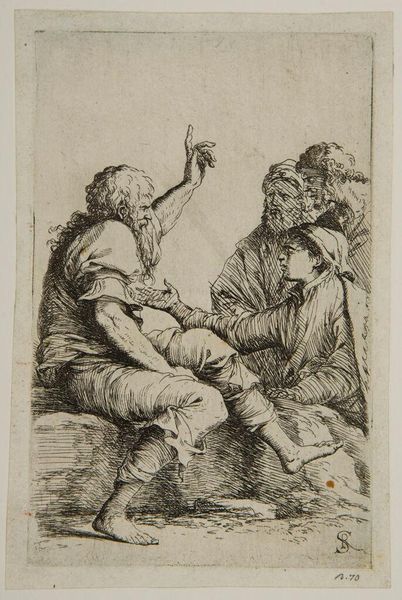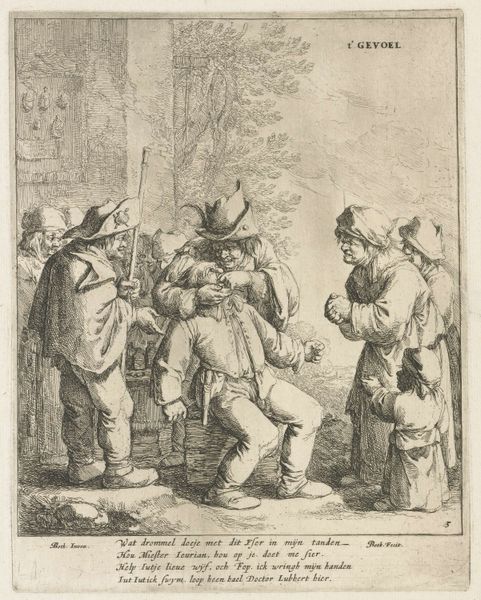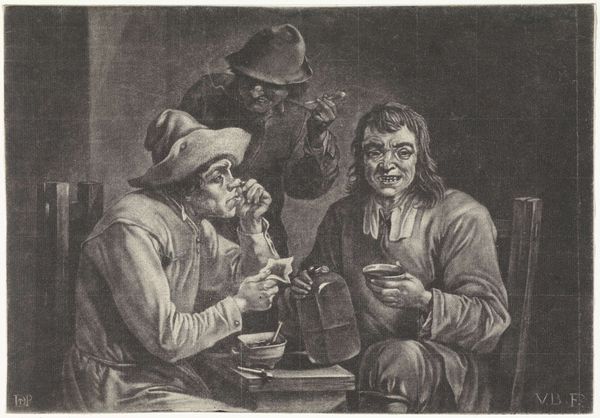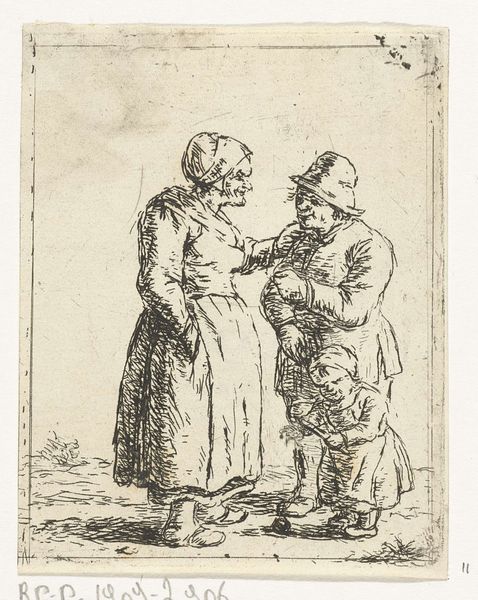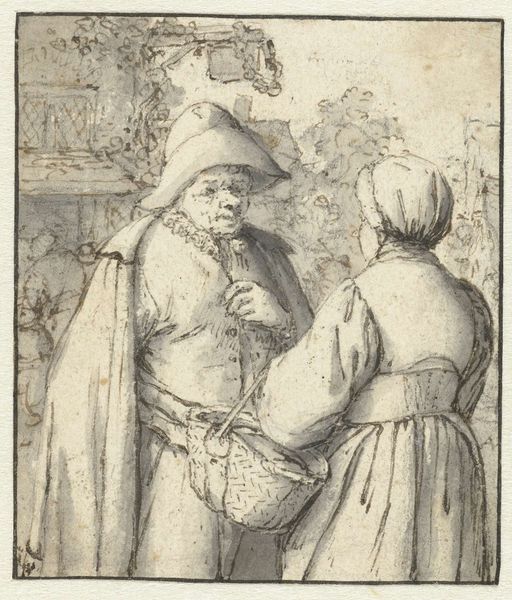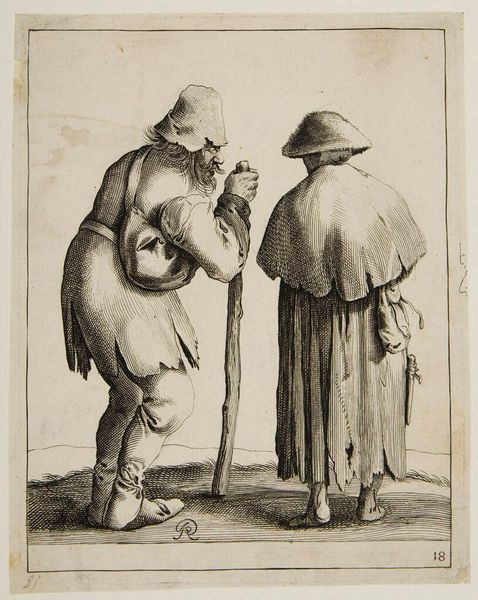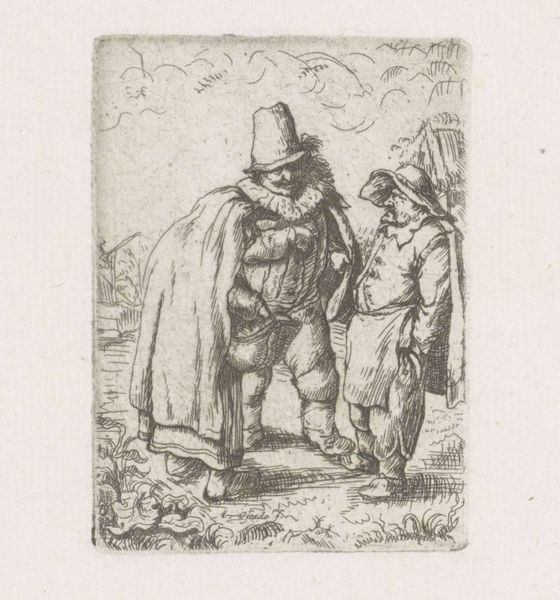
print, engraving
#
portrait
#
baroque
# print
#
genre-painting
#
engraving
Dimensions: height 134 mm, width 87 mm
Copyright: Rijks Museum: Open Domain
Curator: Let's discuss "De Smaak" by Salomon Savery, an engraving likely made between 1638 and 1665. It's currently housed in the Rijksmuseum. What are your initial thoughts? Editor: My first impression is one of muted revelry. There’s a coarseness to the lines, a directness in the representation. I'm drawn to how Savery captures the tangible nature of the scene. The cross-hatching builds form, volume and even light. It looks a little bleak though. Curator: I think it is, indeed, capturing a very real scene of everyday life in that era. The man, presumably enjoying tobacco, the woman with her beer – it speaks to burgeoning consumerism and leisure time of the Dutch Golden Age. Look at how those desires are mediated through these commodities and made acceptable with this artwork. The tools that have gone into the prints production has made this type of information accessible. Editor: Absolutely. Considering this through a formal lens, I am fascinated by how Savery directs our gaze. The diagonal created by the pipe leads us from the seated man up to the woman and the steins contents. It implies not only taste, but also a social dynamic: expectation, perhaps, or interruption. Curator: Good point about the social dynamic and expectations. One might consider, too, the labor that has produced not just this artwork but also these goods, bringing questions of exploitation to mind. Notice the placement of everyday discarded things and tools around the figures, making reference to labour: a bone, and what looks like tools, laid out in a way to frame the image and to root it to the processes it shows. Editor: The contrast between the dark, shadowed areas and the highlights defining the figures adds drama, but that very roughness gives an unsentimental depiction. One could even argue that this composition has some very refined principles if one examines its relationship to a typical painting from the Dutch baroque movement, to the style. The theme in question and use of materials used do create different possibilities though, wouldn't you say? Curator: I do, absolutely. Seeing such a piece in a museum collection pushes us to think about what sort of labour we should be valuing, both artistic and otherwise, that exists both outside and within museum walls. How should a materialist and an engraver judge the tastes, materials, process and labour here? It's certainly left me thinking more broadly about social exchange. Editor: And for me, it is seeing how line, composition and materiality combine to deliver a very real social dynamic. Both angles show, to my mind, a rather fascinating picture!
Comments
No comments
Be the first to comment and join the conversation on the ultimate creative platform.

